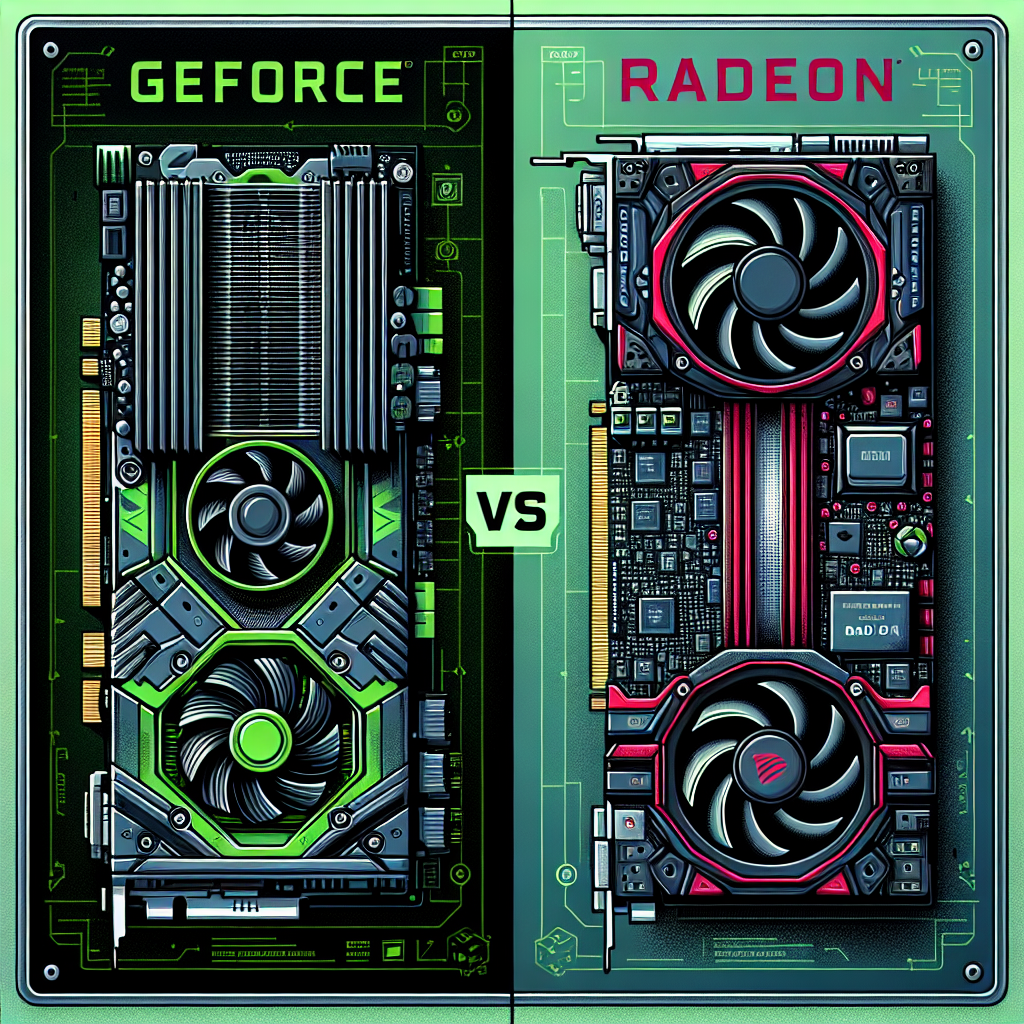When it comes to choosing a graphics card for gaming, two of the biggest competitors in the market are Nvidia’s GeForce and AMD’s Radeon. Both offer a wide range of options to cater to different budgets and performance needs, but how do they stack up against each other? In this article, we will compare GeForce and Radeon graphics cards to help you make an informed decision.
Performance
One of the most important factors to consider when choosing a graphics card is its performance. Nvidia’s GeForce cards are known for their powerful performance and cutting-edge technology. The GeForce RTX series, for example, features real-time ray tracing and AI-enhanced graphics for a truly immersive gaming experience.
On the other hand, AMD’s Radeon cards are also known for their strong performance, especially in the mid-range segment. The Radeon RX 6000 series, for example, offers excellent performance and value for money.
In terms of raw performance, Nvidia’s GeForce cards tend to have the edge over Radeon cards, especially at the high-end. However, Radeon cards are often more affordable and offer better value for money in the mid-range segment.
Features
When it comes to features, both GeForce and Radeon cards offer a range of technologies to enhance gaming performance. Nvidia’s GeForce cards come with features such as DLSS (Deep Learning Super Sampling) for improved image quality and performance, as well as ray tracing for more realistic lighting and shadows.
AMD’s Radeon cards, on the other hand, come with features such as FidelityFX for improved image quality and performance, as well as Radeon Anti-Lag for reduced input lag.
Overall, both GeForce and Radeon cards offer a range of features to enhance gaming performance, but Nvidia’s GeForce cards tend to have more advanced technologies and features.
Price
Another important factor to consider when choosing a graphics card is the price. Nvidia’s GeForce cards tend to be more expensive than AMD’s Radeon cards, especially at the high-end. However, Nvidia’s cards often offer better performance and features, so the higher price may be justified for some gamers.
AMD’s Radeon cards, on the other hand, are often more affordable and offer better value for money, especially in the mid-range segment. If you are on a budget, AMD’s Radeon cards may be the better option for you.
In conclusion, both GeForce and Radeon graphics cards offer strong performance and features for gaming, but there are some key differences between the two. Nvidia’s GeForce cards tend to have better performance and more advanced features, but they also come with a higher price tag. AMD’s Radeon cards, on the other hand, offer better value for money and are a great option for budget-conscious gamers. Ultimately, the choice between GeForce and Radeon comes down to your budget and performance needs.


Leave a Reply